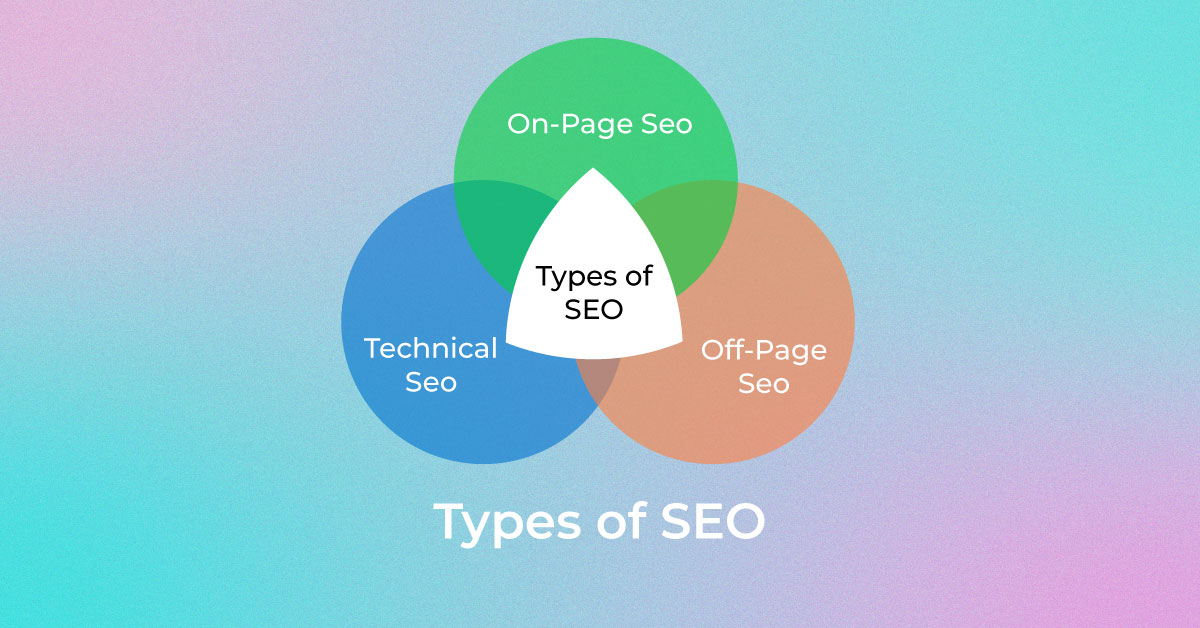Search engine optimization (SEO) refers to the process of improving a website’s visibility in organic (non-paid) search engine results. There are two main types of SEO: on-page SEO and off-page SEO.

On-Page SEO
On-page SEO refers to optimization techniques applied directly on a web page. This includes:
Optimizing page content – Creating content that answers user search queries, avoiding keyword stuffing. Using headings, paragraphs, lists and tables to organize content.
Meta tags – The page’s HTML code contains meta tags like title tags and meta descriptions that summarize the page.
URL structure – URLs should be short, descriptive and static.
Page speed – Faster loading pages rank better on Google. Image compression, minified HTML/CSS/JS help improve this.
Optimizing individual web pages is crucial for higher organic rankings.
Off-Page SEO
While on-page SEO works at the individual page level, off-page SEO comprises the external signals that influence a website’s search visibility. This includes:
Backlinks – Getting quality websites to link back to your pages with anchor text helps rankings.
Social sharing – Getting likes/shares on social media creates brand awareness.
Reviews – Positive customer reviews on third-party websites improve click-through rates.
Alt text on images – Descriptive alt text on images allows search engines to better understand images.
Building credible external signals takes time but boosts organic traffic.
Key Takeaways
On-page SEO improves individual page content and technical site architecture.
Off-page SEO focuses on external ranking signals like backlinks, shares, reviews etc.
Consistently working on both over time can take any website to the top of search engines.
Conclusion
Investing in SEO generates long-term rewards through sustained organic growth in traffic and conversions. A smart SEO strategy requires optimizing for target keyword phrases on-site content while building trusted authoritative signals off-site. As search engine algorithms evolve, staying up-to-date allows leveraging new best practices early on.
Frequently Asked Questions:
-
What are some on-page SEO best practices?
Some key on-page SEO best practices include using targeted keywords appropriately, structuring content using headings and subheadings, optimizing page speed, improving URL structure, and adding ALT tags to images. -
How can I improve my off-page SEO?
Key off-page SEO techniques include getting backlinks from authority websites, generating more social media shares and likes, getting more positive online reviews, ensuring alt text for images, and improving keyword optimization on backlinks. -
How long does it take for SEO efforts to show results?
It can take 2-3 months of consistent SEO optimization for a new website to start showing initial results. Established sites may reflect SEO changes faster within 30-45 days. Full SEO rewards can take 6-12 months. -
What are some SEO tools I should use?
Some recommended SEO tools include Ahrefs, SEMRush, Screaming Frog, Google Search Console, Google Analytics, Surfer SEO, Moz Pro, and Rank Math. Each has unique capabilities to audit sites, analyze competitors, track keyword rankings etc. -
Should I focus more on on-page or off-page SEO?
Both on-page and off-page SEO complement each other so need equal focus. On-page SEO sets the base through optimized content while off-page SEO drives more visibility and authority signals through backlinks, mentions etc. -
What are some tips to avoid keyword stuffing?
Tips to avoid keyword stuffing include – limiting keyword density to 1-2%, concentrating keywords near the top, using related long tail variations, mentioning them naturally in sentences, and having other supporting keywords besides the focus one. -
How do I choose target keywords to optimize for?
Ideally choose keywords that align with your business offerings, have sufficient search volume, match user intent, and have relatively easier competition on search engines for opportunity to rank well within 6-12 months through good SEO. -
Should I get backlinks from any website or only specific types?
Focus on getting backlinks only from credible industry websites with good domain authority scores. Avoid manipulating backlinks using paid campaigns or schemes as search engines penalize such tactics. Relevant contextual backlinks help most. -
How much content is needed on a page for good SEO?
As a rule of thumb aim for creating pages with at least 300-500 words of content with about 1-2% keyword density. Include related media like images, videos, infographics etc. Long form 2000+ word content performs even better for reader experience. -
What type of content is best for SEO?
The most SEO-friendly content types are guides, list posts, reviews, comparison articles, interviews and explainers because they are more engaging and lead to sustained traffic growth versus shallow blogs or product descriptions. -
What is the average meta description character length?
The recommended meta description length is between 150-160 characters, with an upper limit of around 300 characters. Keeping descriptions concise and compelling drives more click-through from search engines. -
What are some SEO tips for my images?
Ensure all images have descriptive file names, ALT tags, title tags, captions and anchor text linking back to pages. Compress images for faster loading. Include infographics where suitable. Feature recognizable people for more user engagement.